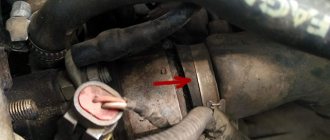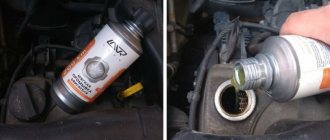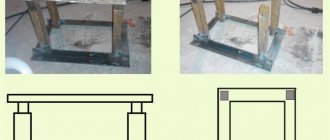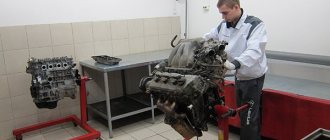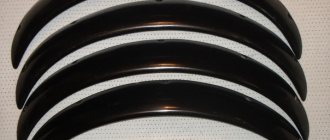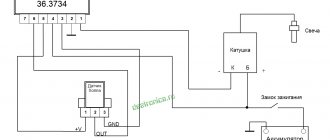How to insulate a car radiator for the winter? The engine loves warmth
Domestic car enthusiasts are often interested in the question of how to insulate a car radiator for the winter.
This is a very pressing problem, because the cold season in most parts of our country is long. Moreover, in some regions a frost of -10°C is considered almost a thaw. Therefore, car owners often face various problems during this period of time. In addition to difficulties starting the engine, fuel consumption increases. After all, the car must idle for some time. If this is not done, engine parts may be damaged.
How does severe frost affect a car?
Many people have heard that operating a car in winter is very bad for it. Just starting the engine in severe frost is equivalent to hundreds of kilometers of summer mileage in terms of wear. Some solve the issue radically and prefer to park their car in winter and travel by public transport. Others, who are not ready to give up their iron horse for several months, but at the same time care about it, try to minimize the harmful effects of winter as much as possible. They treat the car body with special anti-corrosion compounds, fill it with oil with the viscosity required for winter, and be sure to insulate the engine.
Preheater
Content
How to insulate a car radiator for the winter is a rather multifaceted question; there are several different ways to carry out this work. At the same time, there are several myths circulating among drivers about this modification of the cooling system. Despite the fact that they are not true, these myths are quite tenacious and popular:
- Reducing fuel consumption by 20% when using special protective equipment. This myth is inspired by the advertising efforts of manufacturers of such insulation. In practice, of course, fuel consumption is slightly reduced due to faster warm-up. But the savings are much lower. But such kits are very expensive;
- Insulating the radiator makes it easier to start the engine in the morning. If your car has been parked for only a couple of hours, the insulation will retain some of the heat, and the engine will start faster and easier. Having stood in the cold all night, the engine will cool down even with very good insulation. Therefore, insulating the radiator will not give you any advantage when starting up.
Now that you have become familiar with the mythology of insulating the radiator and engine compartment, you can begin the actual work of protecting this part of the car from the cold.
When is insulation unnecessary?
If in your region the air temperature does not drop below -10°C in winter, then you should not close the radiator. Therefore, carefully study the climate data of the area in which you will have to operate the car.
If it's not very cold outside, you risk overheating the engine, which can have unpleasant consequences. The grille covering the radiator provides natural cooling of the engine compartment. The holes in it are provided by development engineers.
As a last resort, protection can be installed if the air temperature suddenly drops. But after it gets warmer outside, the damper must be removed immediately.
Some people rely on uninterrupted, quick engine starts in all weather conditions. This is mistake. Remember that after a long stay the engine will have difficulty starting in any case. When it gets colder, the oil thickens, making it difficult for the crankshaft to rotate. The engine has to turn it over, expending additional effort. Therefore, do not count on radiator protection to make it easier to start the engine if the car has been in the cold for a long time. Yes, during short trips the difference will be noticeable, but after a night break - no longer.
Image source: drive2.ru
Ready-made kits
In auto parts stores you can find various kits for insulating the engine and radiator for the winter. The advantage of such an acquisition is that there is no need to independently select materials and adjust them. But this approach also has disadvantages. First of all, the cost is quite high. At the same time, they sell you simply cut insulation, packed in a bag. Exactly the same material can be purchased at any hardware store.
Another drawback is low frost protection. The materials used for such kits are far from being of the highest quality. Therefore, even at -12°C, insulating elements cannot cope. In this regard, many people strive to insulate the engine compartment with their own hands.
Proper insulation or how to properly close the engine radiator for the winter: technologies and tips
The positive results from thermal insulation of the radiator grille are due to the fact that the engine consumes less resources to achieve and maintain operating temperature than with air cooling in winter. An additional effect is the protection of the heat exchanger honeycombs from the ingress of road reagents, which leads to an increase in corrosion resistance and preservation of the factory life of the part.
Requirements
Disrupting air cooling can cause harm. Untimely and hasty cover of the radiator grille leads to overheating of the engine. You can reduce the likelihood of thermal imbalance, and the following tips will help you do this:
- Do not lean the element directly against the radiator - there must be a gap between the heat exchanger and the thermal insulation.
- Install insulation at a temperature of -10°C or less.
- Do not cover the entire area of the heat exchange element.
For your information. The rules apply to both petrol and diesel versions.
A trivial method of insulation is to insert between the heat exchanger and the bumper a piece of cardboard cut from the box of some household product to certain dimensions. A heat exchange element covered 2/3 in this way is a simple solution to the problem of how to properly close a car radiator for the winter using improvised means.
Owners of cars equipped with air conditioning will benefit from another method of insulation: insert a newspaper between the condenser and the main heat exchanger. The total thickness of the sheets should be such that they move freely between the walls of the radiators.
The disadvantage of quick methods is that they ruin the aesthetics of the front of the vehicle and are not as effective in severe frosts. However, advanced ideas require costs, but the effect is better:
- A set of dampers designed for a specific vehicle.
- External masks for radiator grilles.
- Homemade imitation of branded shields.
Factory products
Model-specific plastic covers are attached invisibly. The shape of the damper closely follows the geometry of the radiator grille and does not cover the car manufacturer’s emblem. Synthetic masks, for example, from the Tammers company, hide the architecture of the decorative sieve, and external quick-release fasteners are not to everyone’s taste.
The price of such a solution will not suit everyone. A plastic shield will cost 500-700 rubles. An impact-resistant and waterproof mask made of synthetic fabric costs about 3,000 rubles.
With your own hands
Plastics have low resistance to destruction from a suddenly thrown stone, and synthetic radiator insulation is expensive. However, the idea of quick installation itself is not entirely successful - the style suffers. These two reasons force owners to implement their own design ideas, as in the case of anti-freeze - their own recipe for a winter washer is much more effective.
- Polypropylene with a foil layer (isolon). Attaches to the inside of the bumper and grille with plastic clamps. Cut according to pattern.
- Faux leather. The cover is made according to the pattern made from the outside of the front end. Usually, braid is sewn along the contour and decorative stitches are made over the entire surface. Fastening is carried out with plastic clamps.
- Flex tubes. Suitable for gratings with horizontal ribs. A pipe of appropriate length is cut along the guide and placed on the edge.
For your information. The use of felt materials is not recommended. They are fire hazardous and absorb fuel and lubricants, road reagents.
Insulation yourself
The easiest option is to insert pieces of cardboard between the grille and the radiator. This allows you to slightly reduce heat loss when traveling in winter. But this is not very effective. Besides, it's not very aesthetically pleasing. Therefore, it is best to use more modern insulation methods. Please note that working with radiator insulation is not enough.
You should also pay attention to the entire engine and engine compartment. When installing, be sure to securely fasten the insulation correctly. If it accidentally gets under the generator or timing belts, you will have to make expensive repairs to these systems.
Why insulate the radiator grille with the onset of autumn?
This “trick” dates back to Soviet times. Cars back then weren't as high-tech as they are now. At that time there were no special engine heating systems. The fan in the cooling system worked constantly, and often did not cope with its duties.
Winters have always been quite cold; temperatures in the European part of the country could reach -35 degrees. The engine took a long time to warm up and quickly cooled down when driving along the highway or stopping. But experienced drivers came up with a way to improve engine heating by covering the radiator grill with improvised material.
But times have changed, cars have improved, and it seems that this method is no longer relevant, but this is not so. With the onset of cold weather, you can see cars with closed grilles on the city streets. And these are not only old Soviet cars, but also modern foreign cars. Why does the old “life hack” remain relevant?
How to insulate?
The radiator is insulated in 2 ways. They differ in complexity of execution:
But insulating the radiator is not enough. You also need to pay attention to the engine. The easiest way is to cover the inside of the hood and engine compartment with insulating material. This will significantly reduce heat loss. Another method of insulation is to make a so-called car blanket (see the article “Which car blanket is best to choose”). For this, heat-resistant material is purchased. It is cut to the size of the engine compartment. After which the resulting “blanket” is covered with the engine. In regions with severe frosts, it would be a good idea to cover the crankcase and sides of the engine with insulation.
Conclusion
. Winter is quite a difficult time for every car enthusiast. Other inconveniences include low temperatures. Interfering with the engine's ability to operate normally. Therefore, many people wonder how to insulate a car radiator for the winter. At the same time, the insulation work is not difficult. The main thing is to do everything carefully.
Why do you need a mask insulation on a car radiator grill?
Insulation mask for a car radiator grille is used at low temperatures and is designed to achieve the optimal internal temperature of the car engine and retain heat in the engine compartment.
Insulation mask for the radiator grill:
- The insulation significantly reduces engine warm-up time at low temperatures, reducing fuel consumption.
- A car radiator cover increases the engine cooling period after stopping it.
- In winter, fuel lines freeze and become deformed, causing them to decrease in diameter, slowing down the fuel supply.
- Motor oil loses its properties and does not lubricate car parts as effectively, increasing wear on parts.
- The cover overlay protects the car radiator grille from snow, stones, sand and other objects.
One of the most effective means is a cover-insulation mask for a car radiator, which has proven itself well on cars with diesel and gasoline engines. The insulation covers for the radiator grille are made from high-quality materials and have a long service life at a low cost. The material used in the production of the insulation lining is resistant to low temperatures, ultraviolet radiation, and chemicals (car wash).
You can purchase high-quality insulating masks for the radiator grille in our auto accessories store.
After purchasing a mask-insulation-radiator cover, auto installation can be carried out by any car enthusiast, without special tools
.
The radiator grille insulation consists of parts for the central radiator grille and parts for the bumper.
- Top (front) layer made of high-quality artificial leather
- The middle (inner) layer is made of sealant.
- The bottom layer is made of a special fleecy lining that does not damage the chrome and paintwork of the grille.
A special fastening allows you to tightly and securely install the insulation trim without damaging the chrome plating on the parts of the radiator grille and bumper paintwork.
The number of parts in a radiator insulation kit depends on the make and model of the vehicle.
When washing (manual or automatic) a car, removing the insulation pad is NOT REQUIRED.
ATTENTION!!! During prolonged operation of the engine at high speeds (highway), it is necessary to ensure access to the oncoming flow of air to the engine by opening one or two valves on the insulation for the Raliator grille.
We use what we produce ourselves.
Patent No. 199601
issued by the Federal Service for Intellectual Property (ROSPATENT) dated May 21, 2020.
© All rights reserved.
Old cars
The tradition, according to which drivers consider it necessary to protect the radiator of their car, appeared quite a long time ago.
This can be attributed to the 70-80s of the last century, when certain mechanisms of the radiator of the engine cooling system were used on cars.
Previously, on cars, the radiator was cooled by a fan, which operated due to the operation of a belt drive directly from the crankshaft. It was the crankshaft that was responsible for spinning the fan blades. An extremely simple principle was applied here. The faster the vehicle traveled, the faster the blades spun. Due to this, more air was supplied to the radiator, and it cooled more actively.
The negative aspect of the situation is quite obvious. The driver did not have the opportunity to control or somehow influence the operation of the fan, depending on the outside air temperature.
In simple terms, even in the cold winter, when the car accelerated strongly enough, the fan spun very quickly. This entailed problems with the operation of the motor, which simply did not have time to heat up to operating temperature.
This, by the way, relates to the question of whether it is necessary to warm up the engine in winter and summer. Read the material at the link, a lot will become clear.
In winter, due to insufficient heating, when the internal combustion engine simply could not reach its normal operating temperatures, corresponding malfunctions arose. But even in summer, such active cooling had its negative aspects. For example, at high speed the engine was well cooled. But when the car had to idle for a long time, overheating occurred. This is due to the low speed and high temperature outside. The fan did not have enough effort to cool the radiator and the motor itself, respectively.
As you understand, then it was really necessary to limit the incoming air flow to the radiator. For this purpose, cardboard, an improvised apron, a blanket and other similar solutions were used.
Winter insulation
As statistics show, fuel consumption in the cold months of the year increases by 20-25%. This is caused by prolonged warm-up of the engine. Medium-power units require almost 500 mg of gasoline to heat to operating temperatures. If we take into account current fuel tariffs, we can determine how much money car owners are literally wasting. And the monthly amount of such heating is simply huge. Therefore, every car enthusiast tries to find ways to reduce such losses.
Such a task is achievable by using several methods. The first of these is a complete refusal to warm up the engine. By the way, most foreign automakers make similar recommendations. If you travel without traffic jams over short distances, it is quite possible to achieve such savings. However, then a lot of financial resources may be required to overhaul the pistons - because sudden loads on each of the cold parts cause their destruction.
If the manufacturer considers it important only to fulfill warranty obligations, further maintenance is already the driver’s problem.
Experts strongly recommend warming up the engine at least partially by idling, and then while driving. The most popular way among Russian car enthusiasts to reduce warming up using a cold start is to cover the radiator grille with various dense materials, including cardboard.
It is impossible to prove the effectiveness of this method, but experts believe it can lead to boiling of the engine.
The feasibility of such warming up of the unit is being actively discussed online today. Of course, any car owner can try it, but only if they have an extra engine. During the process of heating and subsequent cooling, the influence of the cardboard is reduced to zero - it is capable of trapping warm air masses flowing not in the side direction, but upward.
Another popular way to reduce the consumption of precious fuel is to insulate the engine immediately after the onset of winter. It is covered with felt, a used blanket or an old jacket.
It is possible to reduce the warm-up time of the main unit of a vehicle with the help of high-quality insulation. This will allow car owners to significantly reduce fuel consumption, as well as ensure the safety of all parts. Such insulation is carried out not by closing the radiator, but by insulating the engine compartment.
According to special tests, the most optimal solution would be to use special materials as engine insulation in winter that can withstand up to 1200 degrees and are made from fire-resistant fiber using high-tech solutions.
Modern cars
We've sorted out the old cars. But the question remains open as to why such solutions, like cardboard, not to mention a car blanket, are used on modern vehicles.
Modern cars include models produced closer to the 2000s, as well as all current cars. Namely:
- Lada Priora;
- Lada Granta;
- Renault Logan;
- Kia Rio;
- Renault Duster;
- Passat B6;
- VAZ 2110;
- Ford Focus;
- VAZ 2107;
- Hyundai Solaris, etc.
Modern cooling systems differ significantly from those discussed in the previous section.
Now the fan turns on automatically as needed. This happens when the temperature sensor is triggered. Forced cooling is switched on when the internal combustion engine reaches its maximum temperature.
Usually we are talking about warming up to 90-95 degrees Celsius.
To monitor temperature changes, the system is equipped with a thermostat. The control system is electronic; it is in no way tied to the crankshaft. This allows the engine not to boil, even when it is very hot outside. At the same time, in winter the fan turns on extremely rarely, since the radiator has enough outside air to cool the system. But even in this case, drivers still continue to use cardboard and other similar means.
Some people simply put a piece of cardboard, others make a car blanket with their own hands and use other options for insulating a car for the winter, which we have already told you about in previous materials.
This makes sense. The presence of limiters allows you to more effectively retain hot air in the engine. The engine is insulated, and therefore it is easier for it to start in winter. At the same time, fuel consumption decreases and the cabin becomes warmer.
Insulation mask for the radiator grille – effective protection against freezing
The essence of the problem for most domestic drivers is ignoring the need to insulate the vehicle. This, first of all, concerns residents of the northern regions of Russia, whose cars suffer the most from the indifference of their owners. During a prolonged cold spell, all elements of a car engine are susceptible to sudden hypothermia. As a result, the time required to warm up the engine increases significantly. In addition, due to freezing, fuel lines are deformed and significantly narrowed in diameter, which slows down the fuel supply. Do not also forget about the condition of engine oil at sub-zero temperatures. It not only often freezes, but also loses its properties and ceases to lubricate the parts in contact under the hood as effectively as before.
In order to prevent car parts from freezing in winter, there are several ways to insulate them. The most common and effective remedy is an insulation mask for the radiator grille. These insulation products have proven themselves to be excellent when installed on cars with diesel and gasoline engines with low emissions in the temperature range from 0˚C to -29˚C. They are able to speed up the process of heating the engine to the optimal operating temperature and maintain it during vehicle operation. This helps reduce fuel consumption and increase the service life of the machine engine itself.
You can purchase similar insulation for the radiator grille in almost every auto store in the country. During the purchasing process, you should pay attention to the manufacturing company. The products of the Finnish company Tammers have proven themselves best. Masks from this company are characterized by a long service life and low cost. It is also worth noting the insulation of the Italian company Espada. For their production, high-quality materials are used that effectively protect machine parts from freezing.
After purchasing the insulation mask, you can begin installing it on the car. Installation of insulation can be performed by every car owner. This does not require extensive experience in solving similar problems. Everything that is necessary for successful installation is already included in the insulation kit.
At the beginning of the installation, we take out all the components of the insulation kit. The protective cover has ready-made holes into which the fastening hooks must be inserted. Next, we install the insulation on the radiator grille or on the air intake (the location intended for installation is indicated in the instructions), after which, using a flat-head screwdriver, we thread the fastening hook downward from the center of the trim. Using the same screwdriver, you can rotate the hook in a different direction until it fits into the intended fastener.
The result is effective protection against freezing of car parts in winter. The entire mask installation process takes about 30 minutes. After installing the insulation, it is worth checking its stability. To do this, you can lightly tug the mask from different sides.
In addition to installing a mask, you can use other types of insulation in the engine compartment. For example, you can use a car blanket for the engine. When purchasing such insulation, special attention should be paid to its quality. The packaging of the car blanket must indicate that the product is made of fire-resistant material that can be exposed to high temperatures. Otherwise, the insulation may simply catch fire under the hood of the car.
After purchasing the car blanket, you can begin installing it. To do this, open the hood and lay out the insulation so that it completely covers the engine compartment. We check the space for gaps and, if there are none, close the hood. This method of insulation is undoubtedly the easiest to protect car parts in winter.
You can also effectively insulate a vehicle engine in winter by installing an autonomous pre-heater. This device is characterized by one feature: when using it, the car driver should try to stay close to a 220V power source.
In addition, to activate the heater, you need to switch the device to manual mode. For most drivers, this feature is considered a significant drawback. However, the preheater also has a lot of advantages:
- the ability to start and operate the car even at the lowest temperatures;
- the device maintains a comfortable driving temperature in the car interior;
- the driver will no longer need to scrape ice from the windshield of the car - the device will quickly melt it;
- the heater is an environmentally friendly device that operates absolutely silently;
- the cost of a pre-heater ranges from 3-4.5 thousand rubles. Despite the low price, you can use the equipment for 3-4 seasons.
The installation of the heater, unlike all of the above-mentioned insulation materials, should be carried out exclusively by professionals. This is due to the need to completely dismantle the front bumper of the car, as well as some parts located nearby.
As you can see, insulating a car for the winter is a quite simple task, and its solution is accessible to every driver. The only thing that is required from us is the desire and understanding that, having “overwintered in the warmth,” the engine will thank us with stable operation throughout the rest of the year.
What to use for closing
For modern vehicles, it is not fundamentally important what exactly the motorist will use to cover the engine cooling radiator in the winter.
If you are not very concerned about the aesthetic component of this issue, use the most ordinary cardboard. If you want to improve its appearance, use cardboard as a base and wrap it in some nice fabric that won't stand out against the decorative lattice.
Don't forget about the current range available in automotive supply stores and on specialized websites. There you will find a huge number of accessories suitable for such purposes. As you remember, we have already talked about car blankets that are used to cover the engine in winter. There are smaller versions of such blankets that are installed directly between the radiator and the decorative radiator grille.
Pay special attention to the material with which you will be covering. It must be strong enough. It should not crumble or scatter into small particles under the influence of oncoming air currents. Otherwise, all this will end up on the engine, and could potentially lead to certain negative consequences. It is better not to use the same piece of plastic or some sheet of plywood.
Why do you need engine insulation?
Each engine start in winter, when the air temperature is significantly below zero, followed by warming it up, wears out the mechanism approximately as much as a 100-kilometer trip in normal weather conditions.
Due to the deterioration of gasoline evaporation at low temperatures, the quality of the combustible mixture drops sharply, and a frozen battery releases only part of its charge. In addition, it takes more time, and, consequently, more gasoline, to warm up the engine than at above-zero ambient temperatures. That is why, when preparing your car for winter, you need to take care of insulating the engine.
Properly performed insulation is not a panacea for all winter ills, but a necessary measure; it speeds up warming up and slows down the cooling of the entire system by improving its thermal insulation from the effects of surrounding cold air.
1 Reasons for insulating car parts in winter
The essence of the problem for most domestic drivers is ignoring the need to insulate the vehicle. This, first of all, concerns residents of the northern regions of Russia, whose cars suffer the most from the indifference of their owners. During a prolonged cold spell, all elements of a car engine are susceptible to sudden hypothermia. As a result, the time required to warm up the engine increases significantly. In addition, due to freezing, fuel lines are deformed and significantly narrowed in diameter, which slows down the fuel supply. Do not also forget about the condition of engine oil at sub-zero temperatures. It not only often freezes, but also loses its properties and ceases to lubricate the parts in contact under the hood as effectively as before.
Similar articles
Hood insulation
Instead of the standard hood insulation or on top of it, it is necessary to fasten a piece of foiled polypropylene foam on the inner surface using clips, giving it the required shape in advance, using the standard insulation as a template.
In addition to insulating the engine, the hood insulation performs another useful function. The fact is that it protects the paintwork of the hood from destruction, and the hood itself from corrosion. On the hood, insulated from the thermal effects of the engine, snow will no longer melt, turning into drops of water, which will then form ice on its surface as it cools.
In addition to insulating the hood, it is also advisable to seal the joints between it and other parts of the body.
Advantages of insulation
Undoubtedly, the main advantage of an insulated engine is its faster warming up and slower cooling. This in turn leads to reduced fuel consumption and less wear. Don't forget about comfort. It is much more pleasant to drive a warm car, which is warm and cozy, than in a “refrigerator on wheels.”
Of course, insulating the engine will not solve all problems. The car will still cool down completely overnight. The first morning start will be the same as for an engine without insulation. But all subsequent starts during the day will cause much less harm to it, and the interior will be filled with warmth faster. However, there is a method that solves the problem of morning start-up. It is also discussed below
Radiator insulation
A fairly simple way to insulate a radiator is to install a material with thermal insulation properties between it and the front decorative grille. The most basic option for such insulation is to insert one or several pieces of cardboard into this space.
A more advanced way to protect the radiator would be to install special insulation, both factory-made and home-made, on the decorative radiator cap. Most often they consist of a cover made of leatherette, inside of which there is thermal insulation material.
A prerequisite for such covers is the presence of a valve in them, which acts as a kind of curtain that can be lifted, opening air access to the radiator when it warms up.
How and when to close the radiator grille
Insulating the radiator can also harm the car, but the fact is that if you insulate it too early, this can lead to overheating of some components. To prevent insulation from leading to negative consequences, we have prepared several important recommendations. They are suitable for both diesel and petrol vehicles:
You should not completely wrap the entire radiator, and then the cooling system will definitely not overheat. When installing thermal insulation material, you should leave a small gap.
A small gap between the heat exchanger and the heat insulator will help maintain the engine temperature in the working area. The radiator should only be closed at temperatures below -10 degrees Celsius!
Car blanket
At the moment, auto parts stores have a very wide selection of car engine blankets. We recommend choosing products filled with kaolin wool. This is a reliable, durable and practical material that retains heat well.
In addition to low thermal conductivity, such products are fire-resistant and can withstand temperatures up to 1200 ° C. In addition, they are immune to the effects of aggressive liquids, so they will withstand contact with electrolyte, fuels and lubricants and operating fluids without consequences.
Why do you need to insulate your engine in winter?
According to statistics, fuel consumption in winter increases by 20-25%. This happens mainly due to prolonged heating of the power unit. An average engine sometimes burns up to half a liter of gasoline in order to heat up to operating temperature, and at current prices this is literally “money for air.” As a result, most motorists are wondering: how to reduce fuel consumption in winter?
There are several ways to do this.
- The first method, which, by the way, is recommended by the manufacturers of most foreign cars, is not to warm up the engine at all. For short trips without traffic jams, you may be able to save money. True, then you will have to seriously spend money on major repairs of the pistons, because sudden loads on cold parts simply destroy the mechanism.
It is important for the manufacturer that the car passes the warranty period, and what happens next is the problem of the car owner. Therefore, experts still advise warming up the power unit partly at idle and partly while driving.
Read more about warming up the engine here.
- The most popular way among domestic car enthusiasts to reduce warm-up time during a cold start is to cover the radiator grille with cardboard or other dense material. It is difficult to say how effective this can be, but in our opinion, there is simply no better way to boil an engine. Especially if you get stuck in traffic.
The feasibility of this method is still being discussed on the Internet. Of course, you can try it if you have an extra engine. But the cardboard will not affect the heating and cooling time in any way, because it will not be able to trap warm air from the engine, which goes upward and not to the side.
- The third popular way to reduce fuel consumption in winter frosts is to insulate the engine. For example, cover it with felt, an old blanket or, at worst, a jacket. However, the main disadvantage of this method is unsafety, because the same jacket can catch fire at any time while driving, since some parts of the engine heat up to 700 °C during operation.
Based on the above, it becomes clear that in order to reduce the engine warm-up time in winter and, as a result, to reduce fuel consumption, the car engine needs to be insulated. Moreover, this should be done without closing the radiator, but by insulating the engine compartment.
Tests have shown that the optimal solution for engine insulation is the use of materials specially designed for this (see video at the end of the article). Such automotive insulation can withstand temperatures up to 1200 °C and are made from high-tech fire-resistant fiber.
Insulation of the lower part of the engine compartment
After removing the engine protection and apron, you need to clean them and degrease them with gasoline or solvent. Next, it is necessary to cut out a blank for the future insulation from an insulating material based on building isolon or kaolin wool in a shape corresponding to the protection of the engine and its apron.
Having placed the thermal insulation on the protection and apron using mastic or glue, we install the protective elements backwards.
When carrying out work on insulating the lower part of the engine compartment, do not be too lazy to also insulate the oil pan by covering it with heat-insulating material.
To ensure complete engine insulation, it is advisable to cover the side surfaces of the engine compartment and the partition between it and the car interior with thermal insulation. Since this process is quite labor-intensive and involves removing devices and instruments attached to the wings and bulkhead, and then cleaning and degreasing these surfaces, we advise you to resort to it only in rare cases, when the climatic conditions in your area in winter are especially harsh.
